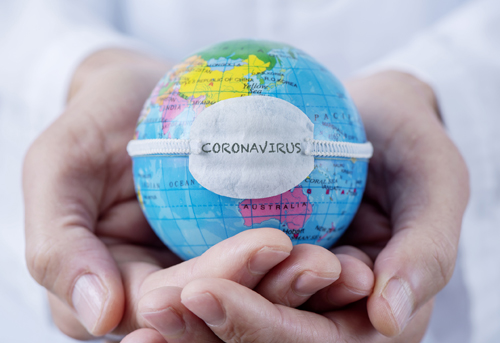COVID-19 situation update
October 22, 2020
The Minnesota Department of Health held a media conference call on Oct .15 regarding the latest public health information regarding COVID-19. Minnesota Governor Tim Walz talked about the “invisible enemy” called COVID-19, discussing the impacts, and the partnerships that help to make a difference in battling that enemy.
Walz reminded everyone that the virus affects everyone so differently; from the person who has it but has no symptoms, to the person who has symptoms but gets over it, to those that go into the hospital and end up in a coma, to the “2,100-plus neighbors of ours who have never come home.”
The governor went on to say that the upper Midwest is now a hotspot, and our state is surrounded by the first, second, and fourth highest states for transmission in the country right now. “Once that starts to happen, more of the bad outcomes, like hospitalizations, start to show up just because of the sheer numbers,” he said.
Masking, social distancing, staying home when sick, and most importantly, being able to be tested with quicker results will help to break the transmission of the virus.
At a prior MDH Media Briefing on Oct 12, MDH Commissioner Jan Malcom said, “What we’ve seen in states around us is a cautionary example of how quickly things can get worse when the state is seeing uncontrolled community transmission. The relationship between case growth and testing volume and this persistent test positivity rate tells us that there is a lot more disease out there than we have seen in the past.”
MDH Assistant Commissioner Dan Huff reported that having the ability to test helps the state’s schools and businesses stay open, and providing a strategy for access to testing is the most efficient way to make that happen.
“Saliva testing is part of that strategy,” Huff said, “as well as capacity.” The state will be opening up saliva testing sites in 10 places in Minnesota in the coming weeks. Two are scheduled to open in greater Minnesota. Look for news regarding where those sites will be in the Messenger and on MLHS’s Facebook page.
Locally, Mille Lacs Health System is testing using MDH-approved swab and rapid tests. And though hospitalizations for COVID-19 have not reached the local facility, problems associated with the state’s number of ICU beds have affected patients.
Denny Tranel, an MLHS Emergency Room Physician Assistant, recently said he had a patient come in very ill, with an infection Tranel was hurrying to find the root cause of. He explained that the patient desperately needed transfer to a critical care unit in a facility that could handle the issues but said, “There were no ICU beds available. Each hospital explained it the same way ‘COVID… filled us up.’”
Tranel said it’s easy to think ‘COVID isn’t bad’ if you had it and it was mild, or if you know someone who had it and didn’t die. “But it’s a sneaky and secretive disease, affecting people in ways that most don’t understand,” he said. “If your loved one is sick from whatever disease is attacking their bodies and you are sitting in a small rural hospital waiting for hours to get to that higher level of care, only to have the provider keep coming back to your bedside to explain to you and your loved one that all ICU beds are full of COVID patients, this is where the deeper implications of this pandemic come into play.”
Governor Walz urged people to cooperate with contract tracers and watch for news regarding regional and community testing sites to protect yourself, friends, family, and coworkers. “We’re exploring every avenue to test and to make that available to anyone,” he said.
